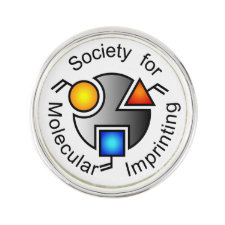
Authors: Takagishi T, Hayashi A, Kuroki N
Article Title: Cross-linked polyvinylpyrrolidones with increased affinity and specificity for methyl-orange and its homologs.
Publication date: 1982
Journal: Journal of Polymer Science, Polymer Chemistry Edition
Volume: 20
Issue: (6)
Page numbers: 1533-1547.
DOI: 10.1002/pol.1982.170200614
Abstract: Polyvinylpyrrolidones of various degrees of cross-linkage have been prepared by radical polymerization of N-vinylpyrrolidone with methylenebisacrylamide to regulate the fraction of cross-linkage. The insoluble polymers obtained were examined for their ability to bind methyl orange and its homologs, methyl orange, ethyl orange, propyl orange, and butyl orange at 5, 15, 25, and 35°C, respectively, in an aqueous solution. The first binding constants and the thermodynamic parameters that accompanied the binding were calculated. For any particular dye the extent of binding, the absolute magnitude of F°, and the value of S° increased as the degree of cross-linkage increased, starting with water-soluble polyvinylpyrrolidone (zero cross-linkage) and proceeding to the polymer with high cross-linking density. This behavior can be accounted for in terms of more extensive hydrophobic domains in the cross-linked polymeric matrix that enhances hydrophobic interactions in the binding process. Moreover, the cross-linked macromolecule polymerized in the presence of methyl orange and then stripped of the bound methyl orange shows substantially stronger binding for this small molecule than the polymer cross-linked in the absence of methyl orange. In contrast, the cross-linked polymer prepared similarly in the presence of the larger molecule, butyl orange, exhibits decreased affinity toward the smaller consolute, methyl orange, than either of the other polymers described. It seems, therefore, that the polymeric matrix provides favorable binding sites or pockets that can a specific small molecule. The preparative procedure, which uses a small-molecule template, molds into the polymer some structural specificity in the binding of small molecules.accommodate a specific small molecule. The preparative procedure, which uses a small-molecule template, molds into the polymer some structural specificity in the binding of small molecules.



Join the Society for Molecular Imprinting

New items RSS feed
Sign-up for e-mail updates:
Choose between receiving an occasional newsletter or more frequent e-mail alerts.
Click here to go to the sign-up page.
Is your name elemental or peptidic? Enter your name and find out by clicking either of the buttons below!
Other products you may like:
 MIPdatabase
MIPdatabase









